2022-09-16
国际韩礼德研究会三号通知 Matthiessen、胡壮麟等重要学者将做主旨发言
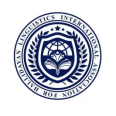

国际韩礼德研究会三号通知
Matthiessen、胡壮麟等重要学者将做主旨发言
(报名截止日期10月10日)
国际韩礼德研究会(International Association for Hallidayan Linguistics)由澳大利亚学者与中国学者于2019年5月27在澳大利亚悉尼联合注册创办。研究会是法人社团。研究会的宗旨在于弘扬世界著名语言学家韩礼德(M.A.K.Halliday)的学术遗产。研究会聘请国内外学者为名誉会长、会长、副会长、常务理事与理事。研究会实行会员制。参加研究会主办活动的学者自然成为学会会员,并颁发会员证书。会员遵守研究会章程。
国际韩礼德研究会2022年会定于今年10月22-23日线上举行。本次会议主题是:新的意义方式——21世纪语言学的新挑战(New Ways of Meaning:Challenges to Linguistics in the 21st Century)。本次会议邀请到了以下重要国际学者做主旨发言:Christian Matthiessen(湖南大学)、Elisabetta Adami(利兹大学)、Derek Irwin(诺丁汉大学)、Emilia Djonov(麦考瑞大学)、Shoshana Dreyfus(卧仑岗大学)、Locky Law(香港大学)、Kazuhiro Teruya(香港理工大学)。我会名誉会长、北京大学资深教授胡壮麟先生也将应邀致开幕词,并做“韩礼德论机器翻译”的主旨发言。欢迎国内外对韩礼德语言学研究感兴趣的学者参加。
会议分为主旨发言与平行小组发言两部分。主旨发言每人40分钟。小组发言每人20分钟。会议收费人民币600元。开具会议承办单位发票。参会者递交论文摘要和作者简介(中、英文均可)、照片,作为编写会议手册之用。收到会议论文摘要后,我们将择优选取部分做大会主旨发言,其他均安排平行小组发言。会前我们将通过国际韩礼德研究会的官方微信平台“韩礼德研究”发布会议手册。会后我们将发布会议学术综述以及优秀论文选载。并通过《东亚学术研究》国际期刊(ISSN2519-3392)发表“会议专栏”论文。
会议安排如下:
1. 会议时间:2022年10月22-23日
2. 会议平台:腾讯会议974 922 372(会议设有密码,缴费后实名制参与会议)
3. 会 务 费:600元人民币。线上举办无需食宿和交通费。
4. 会议邮箱:sfltrip@163. com
5. 参会回执:http://r5ef0t32uefxkw4a.mikecrm.com/ouiC2Sf
6. 截止日期:有意参会者于2022年10月10日(周一)前提交参会回执。
7. 联 系 人:欧阳老师 020-61787164 (+86)18826450958
宋 老 师 020-61787322 (+86)15835566567


欢迎国内外对韩礼德语言学研究感兴趣的学者参加!


主办单位:国际韩礼德语言学研究会 (International Association for Hallidayan Linguistics, Sydney)
承办单位:广州南方学院外国语学院(School of Foreign Languages,Nanfang College, Guanghzou)
会议安排
10月22日(星期六) 22nd October,Saturday |
|||
腾讯会议号:974 922 372 VOOV No. :974 922 372 |
|||
北京时间 Peking Time |
发言人 Keynote Speakers |
发言题目 Keynote Topics |
主持人 Chairs |
9:30-9:40 |
胡壮麟(北京大学) Zhuangling Hu(Peking University) |
开幕式 Opening Ceremony |
唐子茜(广东外语外贸大学) Ziqian Tang(Guangdong University of Foreign Studies) |
9:40-10:20 |
克里斯蒂安•麦蒂森(湖南大学) Christian Matthiessen(Hunan University) |
语言中不断演变的语域构成 Changing ways of meaning: the evolving registerial composition of languages |
刘向东(天津科技大学) Xiangdong Liu(Tianjin University of Science and Technology) |
10:20-10:50 |
胡壮麟(北京大学) Zhuangling Hu(Peking University) |
韩礼德论机器翻译 Halliday's views on machine translation |
朱黎黎(清华大学) Lili Zhu(Tsinghua University) |
茶歇 Tea Break |
|||
11:00-11:30 |
张 冰(北京大学) Bing Zhang(Peking University) |
从《韩礼德文集》的出版看韩礼德语言学思想在中国的传播 The spread of Halliday's linguistic ideas in China in the light of the publication of Halliday's collected works |
丁建新(中山大学) Jianxin Ding (Sun Yat-sen University) |
11:30-12:00 |
丁建新(中山大学) Jianxin Ding (Sun Yat-sen University) |
学科、跨学科、超学科、伪学科—从韩礼德的“新的意义方式” 一文谈起 Discipline, Interdiscipline,Transdiscipline & Pseudo-discipline:Notes on Halliday's "New Ways of Meaning" |
秦 勇(湖南师范大学) Yong Qin(Hunan Normal University) |
午休 Lunch Break |
|||
14:30-14:50 |
辛 斌(南京师范大学) Bin Xin(Nanjing Normal University) |
SFL和CL在CDA中的互补作用 The Complementary Roles of SFL and CL in CDA |
林 燕(湖南农业大学) Yan Lin(Hunan Agricultural University) |
14:50-15:10 |
田海龙(中国石油大学,北京) Hailong Tian(China University of Petroleum,Beijing) |
“人际功能”与“交际界位”:不同术语的相同指向 “Interpersonal Function” and “Stance” as with Systemic Functional Linguistics and Sociolinguistics |
张广奎(深圳大学) Guangkui Zhang(Shenzhen University) |
15:10-15:50 |
照屋一博(香港理工大学) Kazuhiro Teruya(The Hong Kong Polytechnic University) |
待定 |
李雨珊(广州南方学院) Yushan Li(Nanfang College Guangzhou) |
茶歇 Tea Break |
|||
16:00-16:40 |
艾莉莎贝塔•阿达米(利兹大学) Elisabetta Adami(University of Leeds ) 英国利兹时间:10月22日9:00-9:40am October 22nd,9:00-9:40am |
多模态和文化问题 Multimodality and the issue of culture |
刘 喆(利兹大学) Zhe Liu(University of Leeds) |
16:40-17:20 |
德里克•欧文(诺丁汉大学) Derek Irwin(The University of Nottingham) 英国诺丁汉时间:10月22日16:40-17:20pm October 22nd,16:40-17:20pm |
系统功能语言学视角下的 戏剧符号学模型 Modelling Theatre Semiotics from a Systemic-Functional Linguistic Perspective |
李恩耀(香港理工大学) Enyao Li(The Hong Kong Polytechnic University) |
10月23日(星期日) 23rd October,Sunday |
|||
9:30-10:10 |
肖莎纳•德雷福斯(伍伦贡大学) Shoshana Dreyfus(University of Wollongong) 澳大利亚时间:10月23日12:30-13:10pm October 23rd ,12:30-13:10pm |
Time as value: Using appraisal, couplings and communing affiliation to analyse Australian ‘Acknowledgements of Country’ |
刘 毅(深圳大学) Yi liu(Shenzhen University) |
10:10-10:50 |
罗乐禧(香港大学) Locky Law(The University of Hong Kong) |
创造和“意义的新方式”:基于系统功能语言学理论及框架对多模态语篇中创造的分析 Creativity and “New Ways of Meaning”: Systemic Functional Linguistics-based Theories and Frameworks for Analysing Creativity in Multimodal Texts |
牛文培(广东外语外贸大学) Wenpei Niu(Guangdong University of Foreign Studies) |
茶歇 Tea Break |
|||
11:00-11:20 |
杨 敏(中国人民大学) Min Yang(Renmin University of China) |
中美法庭上道德话语的对比研究 A Comparative Analysis of Moral Discourse in Chinese and American Courtrooms |
符小丽(上海师范大学) Xiaoli Fu(Shanghai Normal University) |
11:20-11:40 |
杨雪燕(复旦大学) Xueyan Yang(Fudan University) |
如何增强英语教师课堂提问的互动性?——系统功能语言学视角 How to make teacher questions more interactive with students?A systemic-functional perspective |
杨 荟(澳门大学) Hui Yang (University of Macau) |
午休 Lunch Break |
|||
14:30-15:10 |
艾米莉亚•乔娜芙(麦考瑞大学) Emilia Djonov(Macquarie University) 澳大利亚时间:10月23日17:30-18:10pm October 23rd,17:30-18:10pm |
儿童在跨媒体叙事和符号软件使用中的参与 Children's engagement with transmedia narratives and use of semiotic software |
颜逸飞(中山大学) Yifei Yan(Sun Yat-sen University) |
15:10-15:30 |
张 蕾(天津外国语大学) Lei Zhang(Tianjin Foreign Studies University) |
待定 |
杨维忠(流溪书院) Weizhong Yang(Liuxi Academy) |
15:30-15:50 |
雷 茜(西安外国语大学) Qian Lei(Xi’an International Studies University) |
多模态教学文体学理论探索 和实践 Exploring and Applying Multimodal Pedagogical Stylistic Theories |
王 晶(重庆邮电大学) Jing Wang(Chongqing University of Posts and Telecommunications) |
茶歇 Tea Break |
|||
16:00-16:20 |
王 峰(山东大学(威海)) Feng Wang(Shandong University , Weihai) |
系统功能语言学能为翻译研究做什么? How Systemic Functional Linguistics Can Augment Translation Studies? |
谭 晖(广州交通大学(筹)) Hui Tan(Guangzhou Jiaotong University) |
16:20-16:40 |
周晓康(旅澳学者) Xiaokang Zhou(Australia Chinese Scholar) |
重温旧作——我和系统功能语言学的缘分 Old Work Revisiting – My Connection to Systemic Functional Linguistics |
宋春香(中国政法大学) Chunxiang Song(China University of Political Science and Law) |
16:40-16:50 |
丁建新(中山大学) Jianxin Ding (Sun Yat-sen University) |
闭幕式 Closing Ceremony |
刘玉洁(北京交通大学) Yujie Liu(Beijing Jiaotong University) |
(会议主旨发言顺序考虑到英国、澳大利亚等国家的时差。)
(The order of the keynote speeches is considered against the time difference in England and Australia)
国内学者发言情况视报名情况待定。
国际学者简介
Christian Matthiessen

Christian M.I.M. Matthiessen is Distinguished Professor, School of Foreign Languages, Hunan University. He has degrees in linguistics from Lund University (BA), where he also studied English, Arabic and philosophy, and in linguistics from UCLA (MA, PhD), and has previously held positions at USC/ Information Sciences Institute, Sydney University, Macquarie University, and the Hong Kong Polytechnic University. He has held visiting appointments at e.g. the University of Hamburg and the Brain Science Division of the RIKEN Institute in Tokyo. He is Honorary Professor, Beijing Normal University, Beijing, the Australian National University, Canberra, and Guest Professor, University of Science and Technology, Beijing.
Elisabetta Adami
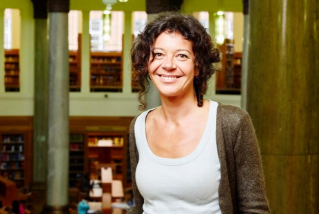
Elisabetta Adami, PhD, is Associate Professor in Multimodal Communication at the University of Leeds, UK. Her research specialises in social semiotic multimodal analysis with a current focus on issues of culture and translation. She has published on sign-making practices in place, in digital environments, and in face-to-face interaction. She is editor of Multimodality & Society, leads Multimodality@Leeds and co-organises the Multimodality Talks seminar series.
Derek Irwin

Derek is the Chair of the International Systemic Functional Linguistic Association and an Associate Professor of Applied Linguistics at the University of Nottingham Ningbo China (UNNC). His recent work has focussed on pedagogical technologies, the movement of lexical items across languages, textual analysis of literary and dramatic texts, and approaches to literacy and language skills for post-secondary writers, particularly in terms of the grammatical resources employed in these activities. He is currently supervising PhD and EdD students working in Critical Discourse Analysis of political and literary texts, gestural and multimodal analysis in learning and in translation, discourse patterns in corpora of expert and learner texts in music, and critical thinking for the curriculum. He is one of the coordinators of arts activities at UNNC, and has worked with a number of high schools and universities internationally and in China on theatre and arts events, including training teachers on the use of drama in the EFL classroom. Derek spends his free time directing, acting, and writing fiction.
Emilia Djonov

Dr Emilia Djonov is Senior Lecturer at Macquarie University, Australia. Her research interests and expertise lie in social semiotics, critical and multimodal discourse analysis, early language and literacy, and multiliteracies education. Drawing on social semiotic theory and systemic functional approaches to language and multimodality, she has examined the interaction between the design of hypermedia texts and semiotic technologies and their use. Djonov’s research has been published in journals such as Discourse, Context & Media; Discourse: Studies in the Cultural Politics of Education, Critical Discourse Studies, Visual Communication, Social Semiotics, TESOL Quarterly and Text & Talk.
Shoshana Dreyfus

Dr Shoshana Dreyfus is a Senior Lecturer in English Language and Linguistics at the University of Wollongong, Australia. Shoshana's research interests cover a wide range areas, including language disorder and nonverbal communication, language and power, social media, disciplinary knowledges and academic discourse, disability studies (including family members and carers of people with disabilities) and different applications and aspects of systemic functional linguistic theory.
Locky Law
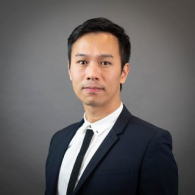
Dr. Locky LAW is Assistant Lecturer in the Centre for Applied English Studies, the University of Hong Kong. He specialises in linguistic theories, the creation and development of linguistic models, corpus creation and quantitative analysis. He has published in journals such as Corpora, Linguistics and Human Sciences, and Journal of English for Academic Purposes. His areas of research interests are creativity, multimodality, digital literacy, telecinematic discourse, social media discourse, Systemic Functional Linguistics (SFL), computer-assisted language learning and teaching, learning transfer, EAP and ESP. His research inventions and innovations include the analysis of creativity using SFL, digital creativity multimodal analysis (DCMA), partial least squares structural equation modeling (PLS-SEM) in EAP, and the world’s first APA 7th edition referencing style stylesheet for Microsoft Word.
Kzuhiro Teruya

Dr. Kazuhiro Teruya is Assistant Professor at the Department of Chinese and Bilingual Studies, Hong Kong Polytechnic University. He has taught courses of comparative linguistics studies of Japanese, Chinese and English, phonetics, phonology and intonation, discourse analysis, grammar as a meaning-making resource, language and society, Japanese as second/foreign language, systemic functional linguistics, register analysis, and language description. He has published books, articles, and research reports on Systemic Functional Linguistics, discourse analysis, multilingual studies, language learning, etc. His research interests include systemic functional linguistic theory and description, comparative linguistics, language typology, discourse analysis, profiling of registers, and advanced second/foreign language learning.
胡壮麟
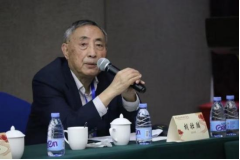
胡壮麟,北京大学资深教授、北京大学外国语言学及应用语言学研究所教授、博士生导师,教育部国家基础教育课程教材专家咨询委员会委员,中国语言与符号学研究会会长,中国功能语言学研究会名誉会长,全国文体学研究会名誉会长,中国英汉语篇分析研究会名誉会长,中国教育学会外语教学专业委员会顾问。《语言学教程》总主编,主要著作包括《系统功能语言学概论(第三版)》《认知隐喻学(第二版)》等。
张冰
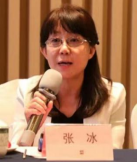
张冰,女,工作单位:北京大学,文学博士,北京大学出版社编审,外语部主任,北京大学俄罗斯文化研究所研究员,《中国俄语教学》副主编,《比较文学与世界文学》副主编,中国高等教育学会外国文学专业委员会副会长兼秘书长,中国比较文学学会常务理事,中国外国文学学会理事,中国俄罗斯文学研究会常务理事,主要研究方向为俄罗斯汉学、俄罗斯文学等。
丁建新
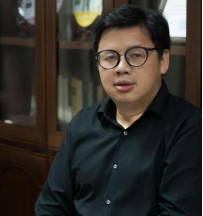
丁建新,中山大学外国语学院英语系教授、博士生导师,中山大学南方学院外国语学院创院院长(双聘),中山大学语言研究所所长,广东省外语类教学指导委员会委员(2019-)。入选“教育部新世纪优秀人才支持计划”、广东省高校“千百十人才工程”、中山大学人才引进“百人计划”。在世界著名出版社Springer出版著作Linguistic Prefabrication(2018)。迄今在国内外重要学术刊物上发表论文近50篇。主持完成国家哲学社科、教育部及广东省科研项目10余项。出版的其它专著或论文集有《批评视野中的语言研究》、《叙事的批评话语分析》、《文化的转向》、《文化研究》、《批评语言学》、《边缘话语分析》等。专著《韩礼德研究》和译著《语言与性别》在商务印书馆出版。任国际韩礼德语言学研究会(International Association for Hallidayan Linguistics, Sydney)会长、中国英汉语比较研究会话语研究专业委员会副会长。流溪书院创建者。粤港澳大湾区外语学科学术联盟理事长。
辛斌
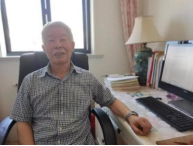
辛斌:男,汉族,1959年6月出生,山东省乳山市人;南京师范大学外国语学院教授,博导;外国语学院英语语言文学专业(江苏省重点学科)带头人;江苏省教学名师,国家级精品课主持人。兼任江苏省外国语言学会会长;江苏教育学会外语教学专业委员会理事长;中国英汉语比较研究会话语分析研究专业委员会会长;中国英汉语比较研究会认知语言专业委员会副会长等。主要研究方向包括语用学、篇章语言学、批评语言学、外语教学理论。出版学术专著6部,发表学术论文130余篇;主持完成国家社会科学基金项目3项;两次获得江苏省哲学社会科学优秀成果一等奖。
田海龙
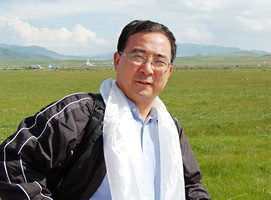
田海龙,天津外国语大学教授、博士生导师。现任中国语言学会社会语言学分会会长,中国英汉语比较研究会话语研究专业委员会副会长兼秘书长,中国石油大学(北京)特聘教授,山东师范大学合作教授。曾任《天津外国语大学学报》常务副主编,天津外国语大学语言符号研究中心常务副主任。研究领域包括社会语言学、话语研究、翻译研究。出版有《语篇研究:范畴、视角、方法》(上海外语教育出版社,2009)、《批评话语分析:阐释、思考、应用》(南开大学出版社,2014)、《社会网络中的话语互动》(天津人民出版社,2021)、《社会语言学新发展研究》(合著,清华大学出版社,2021)等学术著作,以及学术译著《语言与全球化》(商务印书馆,2020)、《全球化的社会语言学》(合译,商务印书馆,2022)、《话语、政治、日常生活》(合译,浙江大学出版社,2019)。
杨敏
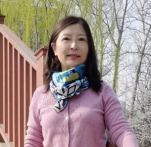
杨敏,中国人民大学外语学院英语系教授,博士生导师。美国纽约城市大学研究生院富布莱特访问学者(2009.08-2010.07),英国雷丁大学教育部留学基金访问学者(2000.09-2001.07)。主持国家社科项目两项、教育部人文社科项目一项以及校级项目多项。研究方向包括批评话语研究、系统功能语言学和社会语言学。迄今国内外期刊发表学术论文40余篇,其中CSSCI期刊30多篇。出版专著《露丝·沃达克政治话语分析的学术思想研究》(中国人民大学出版社,2021年)等五部,译著一部(《恐惧的政治》,第一译者,作者露丝·沃达克,上海人民出版社格致出版社,2020年)。参与教材编写五部。
杨雪燕

杨雪燕,博士,复旦大学外文学院英语系教授,博士生导师。曾任教于外交学院英语系(1990 – 2008)和北京外国语大学英语学院(2008 – 2016)。研究兴趣包括系统功能语言学、话语分析、文体学、英语教育等。已出版专著Modelling Text as Process(Continuum, 2010)和《系统功能语言学理论与实践》(上海外语教育出版社,2021),已发表论文50余篇,其中30余篇发表于SSCI和CSSCI刊物,包括The Modern Language Journal, System, Language and Education, Text & Talk,《外语教学与研究》,《外国语》,《当代修辞学》,《中国外语》,《外语教学》,《中国翻译》等。
张蕾
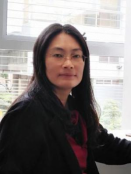
张蕾,博士,教授,天津外国语大学硕士生导师,天津市“131”创新人才第一层次人选和天津市“特聘教授青年学者”,中国英汉语比较研究会话语研究专业委员会副秘书长和天津外文学会常务理事,英国兰卡斯特大学语言学系和澳大利亚新南威尔士大学人文社科学院访问学者。近年来,在Language & Communication, Metaphor & Symbol, Text & Talk, Discourse, Media & Context,《外语与外语教学》、《外语研究》、《语言学研究》、《山东外语教学》等国际和国内核心期刊发表论文二十余篇,出版专著《英汉语篇表征的批评隐喻研究》,获天津市第十三届社会科学优秀成果三等奖,承担《韩茹凯论语言》两章节的翻译工作。主持两项天津市哲学社会科学规划课题,参与一项国家哲学社会科学规划课题。
雷茜
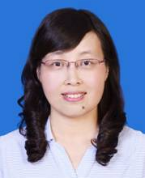
雷茜,女,博士,西安外国语大学教授,博士生导师,国际韩礼德研究会副会长,中国认知诗学学会常务理事,中国文体学学会会员,陕西省社科联中青年社科人才库专家。2015年毕业于同济大学,获英语语言文学专业博士学位。主要研究方向系统功能语言学、多模态文体学、认知诗学。在《现代外语》、《外语教学》、《外语电化教学》等刊物上发表论文30余篇;主持国家社科项目1项,主持和参与省部级项目多项;出版专著1部,参编专著2部。
王峰
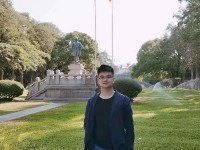
王峰,同济大学文学博士、布鲁塞尔自由大学应用语言学博士,山东大学翻译学院教授、博士生导师,国际韩礼德语言学研究会秘书长。研究方向:功能语篇分析、叙事文体学、语料库翻译研究。担任多家SSCI期刊审稿人。研究成果发表在Critical Arts, Perspectives, SAGE Open, Australian Journal of Linguistics, Studia Neophilologica, Style, Target, Functions of Language, Chinese Semiotic Studies,《外国语》《中国外语》《外语教学》《外语研究》《外语教学理论与实践》《外语电化教学》《上海翻译》等期刊上共30余篇。
周晓康
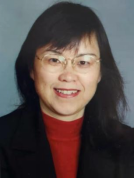
周晓康:文革后首届77级大学生。1978年考入中国杭州大学(今浙江大学)外语系,获英国语言文学学士、硕士学位。1985年留校任教,在杭州大学中文系教对外汉语、公共英语、语言学概论等,同时进修中文系现代汉语研究生课程。1987年考入北京大学英语系,攻读英国语言文学博士学位,同时在北京大学中文系进修现代汉语和历史语言学。1989年11月赴澳,就读墨尔本大学语言学系,攻读西方语言学和系统功能语法,并于1994年赴英国威尔士大学卡的夫学院调研汉语系统功能生成计算语言学模式。1998年获墨尔本大学语言学博士学位。发表学术论文五十余篇,其中《论汉语语序的语篇功能》获北京大学“五四”青年学者优秀论文奖一等奖。1999年就读墨尔本拉筹伯大学(La Trobe University)教育系,获教育学研究生文凭。2000年至今任教于墨尔本半岛文法学校,为该校中文系主任和海外VCE中文课程导师。2019年浙江科技学院人文与国际教育学院聘其为客座教授。2020年被聘为浙江大学汉语国际教育专业硕士业界导师。
周晓康博士是澳大利亚最有影响的国际汉语教学专家之一,其独创的“歌谣汉语教学法”在国际国内有着广泛的影响。她自编自唱教学歌谣350余首,先后在澳大利亚和中国北京大学出版社出版,多次荣获澳大利亚、中国、美国等国际优秀创新教育和图书奖。并在众多国际会议和教学机构作学术报告、教学示范、教师培训,深受欢迎。
部分主旨发言摘要
Multimodality and the issue of culture
Elisabetta Adami, University of Leeds, UK
Linguistics and cultural anthropology have long explored the profoundly intertwined relation between language and culture (e.g., the concept of ‘languaculture’, Agar, 1996). Halliday (1978) has postulated that meanings belong to cultures, so that the former simultaneously reveal and are shaped by the latter. Yet, we also know that communication and meaning making are multimodal rather than solely language-based phenomena. What does this imply for our understanding of culture and intercultural communication?
Studies in intercultural communication (for overviews, Jackson, 2012; Hua, 2018) mainly focus on language, and often consider as intercultural only contexts when people have different nationalities or different mother tongues; yet, what if we consider the overall multimodality of communication? Would this enable us to uncover different nuances in intercultural dynamics?
Social semiotic multimodal analysis (Hodge and Kress, 1988; van Leeuwen, 2005; Kress, 2010; van Leeuwen, 2021) has developed analytical frameworks to explore meaning made in all semiotic resources rather than only language. However, in multimodal studies, the concept of culture is still underdefined (Adami, 2016, Hawkins, 2018), with the occasional cross-cultural analysis often using culture as a mere proxy for nation – a conceptuallisation that has instead long been questioned in cultural anthropology (e.g., Street, 1993, Appadurai, 1996).
In this talk, I will sketch a social semiotic perspective onto culture and interculturality (Adami, forthcoming), which accounts for recent conceptualisations in cultural anthropology, and tries to tackle the issue of what is (inter)cultural in multimodal sign-making.
I will demonstrate the application of such a perspective, through an analysis of participants’ sign-making in a gameplay video, threading between sharedness and non-sharedness (Toh, Fei and Adami, forthcoming).
The analysis shows the potentials of adopting a semiotic rather than linguistic perspective on culture and interculturality, and of looking at patterns of sharedness and non-sharedness as expressed multimodally in any instance of communication, rather than predefining as intercultural a context on the basis of the participants’ mother tongues, ethnicities or nationalities.
Children’s creative engagement with semiotic software: a social semiotic perspective
Emilia Djonov,Macquarie University
This presentation introduces a social semiotic framework for the critical multimodal studies of software as a semiotic technology, a technology that enables and constrains meaning-making and participation in social practices (for a review of the framework’s development, see Djonov & Van Leeuwen, 2023). In introducing the framework, I will briefly highlight how our studies of the design and use of semiotic software have led us to re-evaluate and adapt concepts from systemic functional linguistics and social semiotic theory such as ‘system’, ‘text’, ‘instantiation’ and ’markedness’.
I will then propose ways in which our model could inform the design of pedagogies that encourage children to adopt a critical multimodal perspective towards the software tools they use. This proposal will draw on a small number of case studies of children’s use of and discourses about software for designing multimodal texts, including the analysis of a LEGO stop-motion animation that a 10-year-old child created to represent a scene from William Joyce’s The Fantastic Flying Books of Mr. Morris Lessmore (see Djonov, Tseng, & Lim, 2021).
Modelling Theatre Semiotics from a Systemic-Functional Linguistic Perspective
Derek Irwin,The University of Nottingham
This talk develops an SFL-based approach to theatrical performance by understanding it as a complex event in which discourse participants are both present and not present (Short 1996), as a type of Verbal Art (Hasan 1995), and as a multimodal event which combines elements of the written, spoken, and visual (Tan, Wignell & O’Halloran 2017) with forms of paralinguistic meanings. The approach recognizes the central discursive act by which each performance instantiates these various systems in a relationship with the particular audience at that time; the repeated instantiations of the core text (i.e., the "run" of a show) can be approached as a recontextualization of the base text (written script) which uses reasonably consistent choices among meaning potential systems to create another kind of base text further along the plane of instantiation. Thus there is both complementarity and tension between the participants and text on stage with other performances: the embodiment of an actor in a role has meaning potential in terms of other actors who have played that role, or actors who are known for other roles, or both. Context of culture is also key here in terms of the source culture of the text and the target culture of the performance and audience, including the interplay of these realms.
This model is explored using a bilingual performance from Nottingham's Tri-Campus Arts Festival, in which students from the UK, Malaysia and China brought to life parts of Journey to the West (西遊記), a classic Chinese novel most famous for the character of The Monkey King. By examining the ways in which the text went through series of adaptations before being brought to life in front of an audience who themselves reacted in certain ways to it, the various parts of this holistic theatre semiotic approach are highlighted in terms of how they contribute to the overall meaning in a performance event.
Time as value: Using appraisal, couplings and communing affiliation to analyse Australian ‘Acknowledgements of Country’
Shoshana Dreyfus,University of Wollongong
Systemic Functional Linguistics (SFL) offers a 'toolkit' for the analysis of language and communication with the aim of effecting social change. This is especially true when engaging with emerging discourse practices, such as the new and increasingly prevalent Australian practice of Acknowledgements of Country (AoCs). AoCs are speeches typically delivered by a non-Indigenous Australian host at the beginning of events or presented in various written forms to recognise, acknowledge and pay respects to the Indigenous inhabitants of the land. Despite their ubiquity in Australian public life, AoCs have attracted scant scholarship (McKenna, 2014), although work has begun from an SFL perspective (Dreyfus & Hellwig, in press).
In this presentation, we illuminate the structure and language features of AoCs and show how their meanings work to unite Australians around shared values. We are particularly interested in how time and value are linguistically co-constructed as couplings and what this means for communing affiliation in Australian public life (Dreyfus & Zappavigna, 2022). In order to explore this, we used the discourse semantic system of appraisal (Martin & White, 2005) and the affiliation network (Zappavigna & Martin, 2018) to explore how AoCs help align Australians into communities of shared values through ‘bonding’ (Stenglin, 2011). These bonds are constituted through ‘couplings’ of ideational and interpersonal meanings (Martin, 2000), specifically, couplings of temporal meaning and positive attitude. By applying SFL theory to this emerging discourse practice it is hoped that the role of AoCs in Australian public life can be better understood and more consciously constructed and practiced.
Creativity and “new ways of meaning”: systemic functional linguistics-based theories and frameworks for analysing creativity in multimodal texts
Locky Law, The University of Hong Kong
Three decades ago, Halliday (1990) presented a seminal paper to AILA in Greece entitled New ways of meaning: a challenge to applied linguistics discussing how language is shaping reality. Since then, technological advancement has been one of the “new ways of meaning” driving language change; a change that is realised in various forms of multimodal texts (i.e., in new media via the internet). These new formats provided means for creativity to thrive, which in turn have drawn linguists’ attention in conducting related research. In recent years, the study of creativity has slowly made its way from applied linguistics to systemic functional linguistics (SFL). As theories and analytical frameworks emerge, definitions and descriptions of creativity have broadened and are bridging the gap in our understanding.
In my research, creativity is defined as the interplay between forming and reforming of patterns (Carter, 2004) in text of any medium. When instantiated at the context of situation, it “has undergone changes brought about by [] phylogenesis, ontogenesis and logogenesis to reach a logogenetic stage where meanings can be created, reinforced or altered by a language user's choices to reach a target audience” (Law, 2021, p. 3). This keynote presentation aims to provide an update on the latest systemic functional linguistic-based theories and analytical frameworks for creativity research. It covers aspects such as quantitative methods for the extraction of creative instances from corpora (Law, 2019a, 2020c); qualitative theories and frameworks for the analysis of linguistic and multimodal creativity with respect to register, field, tenor values, information status, and the cline of creativity complexity; their applications in analysing creativity in popular/internet culture; as well as implications for education and pedagogy in digital literacy (Law, 2018, 2019b, 2020a, 2020b, 2020d). Examples of data used in this presentation include authentic speeches, company logos, social media posts, YouTube videos, TV dramas and films in English. Future directions for SFL-based creativity research will also be discussed.
The Complementary Roles of SFL and CL in CDA
Bin Xin,Nanjing University
There have been constant attempts at accounting for language and its use either from a socio-cultural or cognitive-psychological perspective, and Systemic Functional Linguistics (SFL) and Cognitive Linguistics (CL) are representatives of the two general perspectives respectively. It is believed in Critical Discourse Analysis (CDA)that SFL is better applicable to the description stage of analysis and CL is more suited to the interpretation stage, though it seems CDA needs both at the explanation stage of analysis. This talk consists of three parts: 1) SFL and CDA; 2) van Dijk’s comments on SFL’s theory of context; 3) the complementary roles and integration of SFL and CL in CDA.
“Interpersonal Function” and “Stance” as with Systemic
Functional Linguistics and Sociolinguistics
Hailong Tian, China University of Petroleum (Beijing)
As the English proverb says, “all roads lead to Roma,” in academia different approaches may lead to the same research of issues. This happens, for example, in systemic functional linguistics and sociolinguistics. Although they take different approaches and apply different terms, their respective investigation of interpersonal function and stance seem address the same issue. This talk will first discuss what they mean by the two terms of “interpersonal function” and “stance”, and then discuss the approaches they take and offer a tentative account for the context in which they take the different approaches.
A Comparative Analysis of Moral Discourse in Chinese and American Courtrooms
Min Yang,Renmin University of China
Moral discourse embodies interpersonal communication, social relations, responsibilities, and obligations and serves as a reasoning and lecturing tool during judicial activities. As moral imperatives are ingrained in the culture that is instilled into individuals, this study develops an analytical model for identity construction in courtroom moral narratives. The study draws on the Discourse-Historical Approach in Critical Discourse Studies, positioning theory, and proximization theory and employed a model to investigate themes, discursive strategies, linguistic realizations, and identity categories in 10 trials, 5 selected from court sources in China and 5 from sources in the United States. Exploring and interpreting historical and cultural backgrounds, participant identity construction was analysed and differences between the two countries were illustrated, which represented different legal cultures. Contrasting the moral discourse differences in Chinese and American courtrooms, this study intends to provide reference for the complementary use of moral discourse in both courtrooms.
Keywords: courtroom moral narratives, Discourse-Historical Approach, positioning theory, proximization theory, identity construction, China, the United States
How systemic functional linguistics can augment translation studies?
Feng Wang,Tongji University
This study addresses the contribution of Systemic Functional Linguistics (SFL) to translation studies based on the data from the Web of Science. The aim is to provide the state of art of the main findings and proposals of these studies regarding the theoretical apparatus of SFL (e.g., metafunctions, register, genre and context), thus evaluating their relevance and applicability in translation studies.
如何增强英语教师课堂提问的互动性?——系统功能语言学视角
杨雪燕,复旦大学
在系统功能语言学的视角下,教师提问是课堂上发生的互动事件(interactive event)。教师通过提问向学生索取信息,学生提供了质量相当的信息,则互动事件得以顺利进行,否则互动失败。而如何增强教师提问的互动性,以促进学生积极应答,便是一线英语教师在课堂教学实践中必须面对的问题。以往有关教师提问的研究多从语言习得的视角出发,注重课堂互动与学生语言学习之间的关系,虽提出了语言教学理念但难以直接服务于语言教学实践。本研究以教学实践为导向,将研究的重点转向教师提问与课堂互动之间的关系,探究教师应该如何调整自己的话语以增强提问的互动性,旨在帮助一线教师提升课堂互动效果。基于实证性调查研究,我们在人际意义理论的框架内提出了“英语教师提问的互动性系统”,并与一线教师共同展开了为期6个月的合作行动研究,以检验系统的可操作性和实用性。研究结果表明,教师提问时对人际意义的选择决定了教师提问的互动性强度。教师即便为了同样的目的提问时,也可以通过选择不同的人际意义去激发学生应答的积极性。教师提问互动性的增强还有利于形成“教师提问—学生情感—学生应答—教师情感—教师提问”的良性循环,从而提升课堂互动效果以及教师的自我效能感。
多模态教学文体学理论探索和实践
雷茜,西安外国语大学
多模态教学文体学是多模态文体学理论在教学中的应用研究。与教学文体学应用文体学理论研究文学教学(Widdowson, 1975; Carter, 2010)不同,多模态教学文体学的研究对象是与教学相关的多模态问题,包括多模态教材、多媒体教学工具(如PPT和黑板)和多模态课堂教学话语的模态前景化特征及其在意义建构中的作用。由于教学中的多模态相关问题各有特色,具体的多模态教学文体分析需要在多模态文体学理论框架的基础上探索适合自身话语特性的分析路径。本文以多模态文体学理论为基础,提出了英语课堂教学多模态文体分析路径,并分析了第十届“外教社杯”全国高校外语教学大赛视听说组特等奖教学视频的模态和模态间关系前景化特征及其效应,发现其英语课堂教学中的模态调用基本特征,建议教师在英语课堂教学中依据教学语境和教学目的选择模态,强化语言模态主体地位,合理利用音频、图像和肢体模态,适配多模态,并培养自身模态文体意识。
重温旧作—— 我和系统功能语言学的缘分
周晓康,旅澳学者
作为中国改革开放、恢复高考后的第一批77级大学生和北京大学英语系87级首届博士研究生,当年的英语系系主任胡壮麟教授的开门弟子,我有幸目睹、见证了系统功能语言学在中国的兴起和发展,并加入了这一当时为新起之秀的科研队伍,在学习、介绍韩礼德系统功能语法的同时,将其理论应用于汉语语篇和汉语语法研究及计算语言学的句子生成。期间也参加了不少国内外的系统功能语法研讨会,发表了几十篇的论文。最近在完成导师胡壮麟先生的专著《韩礼德学术思想的中国渊源和回归》中译英审校任务之后,感受颇多。
期望在本次中山大学主办的系统功能语言学研讨会上能与各位同行学者交流,分享,共勉。

